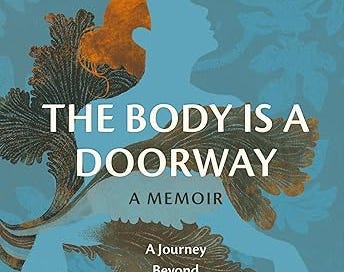Sophie Strand’s new memoir about chronic disease, The Body is a Doorway, shoots roots out underneath the new paradigm emerging in medicine.
Starting out as a cautionary tale about iatrogenic insult as Strand is misdiagnosed with Lyme disease, nearly killed by megadoses of antibiotics, and endures more than one physician who medically rapes her, her memoir eventually reveals Strand’s malady as Ehlers-Danlos syndrome, the genetic connective tissue disorder which she believes was potentiated by childhood sexual abuse. Unfortunately, turning to trauma therapists doesn’t help Strand much either; though she spends copiously on their therapies, her symptoms don’t abate.
A naturkin, Strand does find refuge in the non-human world. Chapters about black mold and woodchucks illustrate ways in which Strand starts to welcome other intelligences as teachers and healers of a sort. Long walks and runs in the woods attune her further to these influences. Encouraged by the Hudson River, she notices that the boundaries of her mind can include the non-human.
I began to strongly suspect that the idea of a single brain in a single body operating smoothly and cleanly was a human fiction. My mind was definitely not just in my body. It was in my entire web of relations, fungal, geological, microbial, vegetal, anscestral, that interwove my specific ecosystem, an ecosystem I was created and sustained by with each gulp of oxygen, each hateful exhalation of carbon. In the mornings, I began to practice a new prayer: Scarlet tanager, woodcock, yellow throated vireo, bugleweed, St. John’s wort, black locust, honey locust, king bolete, cayuga soil, shist, bluestone, turkey tail, mountain lion, coy wolf, trillium, Columbine, mountain laurel, the Schawangunk Ridge, Esopus creek, the mill stream, sturgeon, purple loosestrife, wolf’s spider, chanterelle, osha, phlox… …The prayer got longer and my mind got bigger.
As Strand develops this animistic habit of mind, she realizes that the communication flows in both directions. When a lake she knows is stripped of its surrounding trees, her mindscape denudes, too. She comes to understand her relatedness to be crucial to her healing:
I was not singular in my suffering. My illness was not genetic, it was ecological; it was shared. And if any of us were to heal, I had to understand it would be a communal project, not a singular achievement. In an age of anthropocentrism and ecological suicide, it seems vitally important to practice thinking like other beings… We have behaved like ordinary cells for too long, pretending there is no movement from the inside to the outside, or vice versa. We have believed for too long that our minds belong to us as individuals. But advances in everything from forest ecology to microbiology shows us we are not siloed selves, but relational networks built metabolically by our every biome-laced breath, thinking through filamentous connectivity rather than inside one neatly bounded mind.
Strand’s attunement to her connections is astute—and crucial to bring to the forefront of our medical awareness. How often are our illnesses not just our own? Isn’t the ecological landscape in which we are enmeshed the actual being in distress and we the symptom itself?
We see this clinically all the time. As the Gaian landscape absorbs blows, clients shows up in our clinics and offices and Zoom calls on responsive waves, their complaints all strangely similar. Last week, a slew of patients were dizzy. The week before, many complained of back issues. Next week another pulse will undoubtedly pass through. Which of those is Gaza? Which the weather manipulation? Which the latest Facebook explosion? As the conversation about chronic disease expands, it would do well to include an ecological perspective.
Strand’s book is valuable for the way it familiarizes us with supracellular awareness, as she names it. But the habit she develops of becoming aware of non-human intelligences could also be applied to the landscape within. In the same way that one can communicate with the natural world, one can develop an animistic relationship with one’s own body. Following Strand’s lead, you might just check in every day with your liver, your spleen, your follicles, your fingernails. Good morning kidneys, teeth, soles of the feet, brain, heart. It won’t take long before their replies alert you well before your bloodwork does to what’s going on inside your body.
It’s common for survivors of sexual abuse to become experts at disassociation. This, Strand presumes, is what allowed her to notice that she could communicate with non-human beings. Does it perhaps contribute to preventing healing from materializing in her somatic layers? At least weekly, I am reminding people to “be with the tissues” as they attend their traumas. Be with the scar tissue; be with the tear; be with the collapsed uterus. It’s not enough to perceive the issue; nor even enough to cry over it in the emotional body; you’ve got to get your hands in there and cradle it, even if your hands are imaginary ones in the field. At least, that’s the way I do it.
Another point that Strand makes—and with which I wholeheartedly agree—is that medicine can come in all forms. After she is nibbled by a woodchuck, Strand is relieved to be able to take a rabies vaccine. Without getting too much in the weeds about that topic, I want to underscore the rightness of this approach for her. Healing happens when the attention resonates with the trauma. When we remember this, all of the beings and gifts within our ecological landscape could be medicine.
Love,
Stella





The audible version is in her own voice which is perfect, communicates so much.